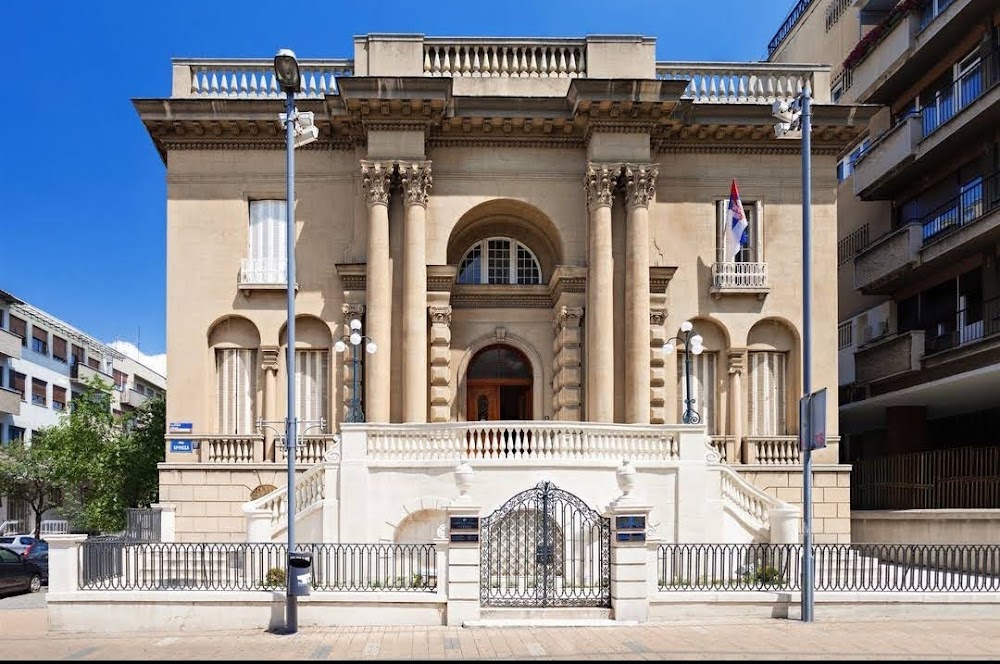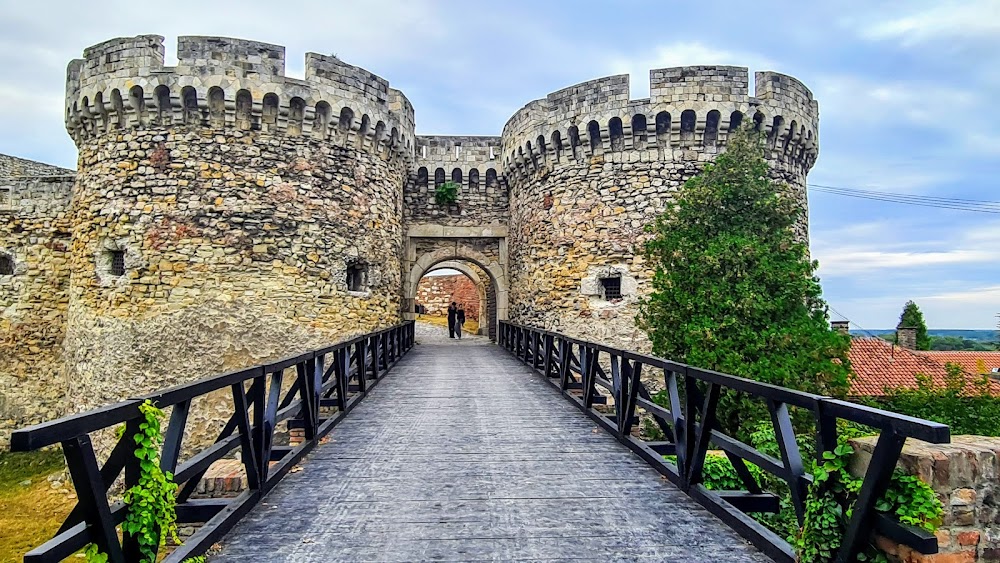House of the National Assembly (Dom Narodne Skupštine)
Overview
In the heart of Belgrade, Serbia, the grand **House of the National Assembly** stands as a powerful symbol of the nation's legislative authority and historical resilience. This impressive edifice encapsulates the spirit and evolution of Serbian governance, making it a must-visit landmark for anyone exploring the city.
The journey to construct a dedicated parliamentary building began in the late 19th century during the reign of **King Milan I**. Although initial plans faced delays due to political and economic challenges, the determination of Serbian leaders ultimately led to progress. The cornerstone was laid in August 1907, with the esteemed Serbian architect **Jovan Ilkić** commissioned to bring the vision to life. Tragically, Ilkić passed away before the completion of his design, but his son, **Pavle Ilkić**, took up the mantle, continuing his father's legacy.
The construction of the House of the National Assembly was a lengthy endeavor, deeply intertwined with the turbulent history of Serbia. Both **World War I** and **World War II** significantly disrupted progress, as the country grappled with invasions, occupations, and extensive damage. Yet, despite these formidable challenges, the commitment to complete the building remained steadfast.
Finally, in 1936, the House of the National Assembly was completed, marking a significant milestone in Serbian history. The structure is a stunning blend of architectural styles, combining **Renaissance** and **Baroque** elements that exude classical grandeur, befitting a legislative palace. Its exterior is adorned with intricate sculptures, elegant stone carvings, and imposing columns that command attention and respect.
One of the most striking features of the building is the **monumental entrance staircase**, flanked by statues that symbolize Serbian history and mythology. The iconic bronze sculptures, **"Black Horses at Play,"** created by renowned sculptor **Toma Rosandić**, add a dynamic and powerful visual element. These statues have become a symbolic representation of Serbian parliamentary democracy, welcoming visitors to this historic site.
Inside, the House of the National Assembly is equally impressive. The central hall, known as the **Grand Hall**, is where significant national discussions and legislative proceedings unfold. The richly decorated interior features breathtaking frescoes, ornamental stucco work, and a grand dome that floods the space with natural light. Every detail reflects the importance of the activities conducted within these walls.
As you explore the building, you'll discover numerous artworks and historical artifacts that narrate the story of Serbia's legislative journey. The use of local materials in construction, such as Serbian marble, adds a profound sense of national pride and identity to the space.
Over the decades, the House of the National Assembly has witnessed various political transformations, from a kingdom to a socialist republic and finally to an independent democratic state. The building has played a pivotal role in hosting key moments in Serbian history, from declarations of statehood to critical legislative assemblies.
Today, the House of the National Assembly is not only a venue for parliamentary sessions but also a cherished cultural and historic landmark. It attracts visitors from around the globe who are captivated by its architectural splendor and the rich political history it embodies. Guided tours provide valuable insights into the building's history, its architectural significance, and the workings of the Serbian legislative system.
Preserving and maintaining the House of the National Assembly is a testament to the enduring legacy of Serbian democracy and governance. Through wars, political upheavals, and societal changes, it stands resilient, representing the collective aspirations and struggles of the Serbian people. This building is more than just a place of legislative activity; it is a proud symbol of national identity and historical continuity.






